
Glaucocharis is a genus of moths of the family Crambidae described by Edward Meyrick in 1938.

Glaucocharis chrysochyta is a species of moth in the family Crambidae. It is endemic to New Zealand. This species was first described by Edward Meyrick in 1882. The binomial of this species is occasionally misspelt as G. chrysoclyta.

Glaucocharis dilatella is a moth of the family Crambidae described by Edward Meyrick in 1879. It is known from Australia, including South Australia, Tasmania, Queensland, New South Wales and Victoria.
Glaucocharis euchromiella is a species of moth in the family Crambidae described by Émile Louis Ragonot in 1895. It is found on Crete and in Syria, Armenia and the Taurus and Antitaurus Mountains.
Glaucocharis pauli is a moth in the family Crambidae. It was described by David E. Gaskin in 1985. It is found in Australia, where it has been recorded from Queensland and Dauan Island.
Glaucocharis aeolocnemis is a moth in the family Crambidae. It was described by Edward Meyrick in 1931. It is found on Tagula Island in Papua New Guinea's Louisiade Archipelago.

Glaucocharis bipunctella is a moth in the family Crambidae. It was described by Francis Walker in 1866. It is endemic to New Zealand.
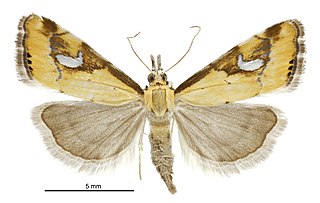
Glaucocharis lepidella is a moth in the family Crambidae. It was described by Francis Walker in 1866. It is endemic to New Zealand. Larvae of this species feed on mosses.
Glaucocharis propepraemialis is a moth in the family Crambidae. It was described by David Edward Gaskin in 1974. It is found on the New Hebrides.

Glaucocharis epiphaea is a species of moth in the family Crambidae. It was described by Edward Meyrick in 1885. It is endemic to New Zealand.
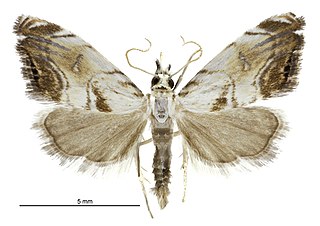
Glaucocharis harmonica is a moth in the family Crambidae. It was described by Edward Meyrick in 1888. It is endemic to New Zealand.
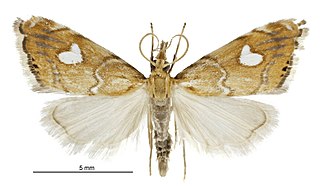
Glaucocharis leucoxantha is a moth in the family Crambidae. It was described by Edward Meyrick in 1882. It is endemic to New Zealand.
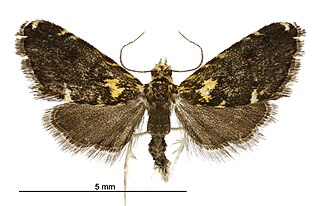
Glaucocharis microdora is a moth in the family Crambidae. It was described by Edward Meyrick in 1905. It is endemic to New Zealand.
Glaucocharis mutuurella is a moth in the family Crambidae. It was described by Stanisław Błeszyński in 1965. It is found in Honshu, Japan.
Glaucocharis tripunctata is a moth in the family Crambidae. It was described by Frederic Moore in 1888. It is found in India and Nepal.

Glaucocharis pyrsophanes is a moth in the family Crambidae. It was described by Edward Meyrick in 1882. It is endemic to New Zealand.
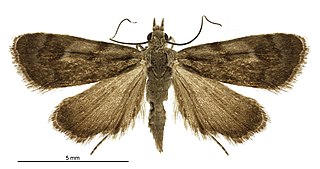
Glaucocharis stella is a species of moth in the family Crambidae. It is endemic to New Zealand.
Glaucocharis rectifascialis is a moth in the family Crambidae. It was described by David E. Gaskin in 1988. It is found in India and China.

Glaucocharis selenaea is a moth in the family Crambidae. It was described by Edward Meyrick in 1885. It is endemic to New Zealand.











